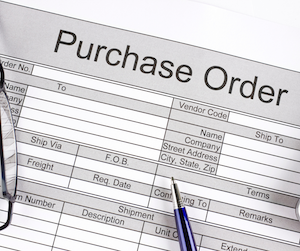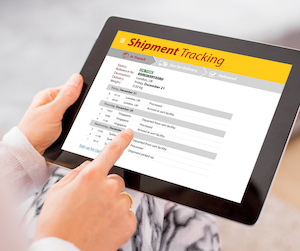Inventory and the supply chain has made EDI a very popular topic around Home Furnishings retail stores. But not enough of us understand everything there is to know about EDI. So MicroD sat with our EDI experts to find out about document types. Whether you are new to EDI or already work with a few trading partners and understand EDI document types, this content will help you understand the different types of document types and transactions that can improve your EDI processes.
What are EDI document types?
Document types, known as doc types, are any of the documents that businesses want to trade. By that we mean the business documents that are necessary to complete an entire order in the supply chain process. One of the most common types is the Purchase Order. These document types are commonly used in the transaction process by retailers to communicate an order with manufacturers. The EDI doc type for purchase orders is the 850. You’ll hear that term most often in communication about EDI doc types. Purchase orders and all other document types have a standard number that is universally accepted. For example, an 850 purchase order. 
But it doesn’t stop there. An 855 is the EDI document type that represents the purchase order acknowledgment. It’s the primary document from the manufacturer in the early stages of the transaction that communicates confirmation to the retailer. You can see that the different milestones of a transaction from the retailer to the manufacturer and including the logistics carrier are all moved along using these important documents. Each of them signal a stage of the supply chain and an update to the status of the customer’s order.
Document types are very important to understand because for retailers just starting with EDI or not using it to its highest benefit, it can highlight areas of improvement. We’ll continue to dive into other document types throughout this article. The 5 basic EDI document types are:
- 850 Purchase Order
- 855 Purchase Order Acknowledgement
- 860 Purchase Order Change
- 856 Advanced Shipment Notice
- 810 Invoice
What are the common transactions EDI works with?
EDI is a valuable business-saving solution. By trading important business documents with your vendors and partners, you can save time and money. But what do common transactions look like and how do EDI document types play a role in replacing the manual process?
What is the 850 Purchase order?
That is the most popular of the EDI document types. It’s purpose is to get orders submitted quickly. When someone places an order, the information is sent electronically using an 850 purchase order document type. So within seconds, it goes from the retailer’s RMS into the manufacturer’s ERP. Then your order is showing in the system exactly as it should. And you had no one manually handling the process.

The benefits are that obvious. Retail staff don’t need to have someone manually enter in the orders. With an 850 purchase order, everything is automated. Think about this, if someone is manually entering in the data, how quickly can they submit the order? It’s all based on their workload. It could get hung up in an email or overlooked altogether. Plus, with high-volume orders coming in, it could take days to start the process of submitting that order. Not to mention order accuracy.
There are fewer errors with trading EDI document types like the 850 purchase order. If one person again handles all of the orders manually and is trying to work fast, errors are more likely to occur. Some companies are still using fax to transmit these orders and rely on good copies coming through the system to be accurate. When it’s all manual, you’re leaving too much opportunity for error and delay. When employees have to go through a manufacturer in order to place the order, think about how many times a day for how many different manufacturers your team is trying to maintain for order entry.
Fewer portals to log into. Fewer errors. And faster order submission to the manufacturers. That’s why the 850 purchase order is such a staple for EDI document trading.
Purchase Order Acknowledgements and Changes
Another very popular portion of the transaction is the purchase order acknowledgment. And it’s another document type traded with EDI. Recently, this document type has been very popular because of its role in supply chain issues.
This document type is sent from the manufacturer to the retailer. It’s a confirmation that the purchase order was received by the manufacturer. It’s in this document type when the anticipated ship date for the product will show. And that’s a critical component of the customer satisfaction in the buying process. The benefit of using EDI to trade this type of information is complicated. Every time there is a change on the manufacturing side, like a delay in shipment, the manufacturer can use this document type to communicate electronically with the retailer. It happens in almost real time and provides some clarity to a confusing situation.
Now this might seem like something that isn’t critical on a one-to-one basis. But when retailers are communicating with dozens of manufacturers about hundreds of orders on a weekly basis, automated updates and communication are invaluable. When retailers and manufacturers aren’t using EDI to transfer these documents back and forth, the retailer is responsible for visiting individual dealer portals for each manufacturer. Checking manually on each order in progress. They’re looking for the most up-to-date shipping information so they can communicate with end consumers. But the time delay and resource drain of this process limits the effectiveness of your retail team. And reduces customer satisfaction–sometimes leading to order cancellations.
Advanced Shipment Notice

This EDI document type is a form automatically sent to the RMS system from a manufacturer with the up-to-date shipping information. Much like the purchase order acknowledgment, it is very important for the customer to know when they’re going to get the furniture they purchased. If there are delays in the process, which happened a lot in the last two years, customers want to know it. This advanced shipment notice is also really helpful for drop shipments. When shipping is handled directly from the manufacturer to the customer, the retailer is not part of the shipping process. Advanced shipment notices can keep the customer updated with the manufacturer’s shipping information.
Retailers aiming for a better customer experience in their omnichannel sales strategy will prioritize frictionless customer satisfaction. Shipping information is a critical piece of that buying process. Help customers anticipate order delivery and provide all the information by trading these important advanced shipment notices with your manufacturers. Most often, this information will come with pertinent tracking and shipment information that manufacturers submit on behalf of your store. Leaving your customers informed and satisfied with the service.
Pricing Changes and Inventory Visibility with EDI Document Types
In the wave of new products, pricing changes, and inventory challenges, retailers have trouble maintaining accurate information online. That’s another reason to utilize advanced EDI document types. Pricing information and inventory updates are two document types that EDI can translate from ERP to RMS to retail website without missing a beat.
In the time of challenging information gathering, utilizing this powerful document management for your products is essential to your business.
Which document types do you need?
We asked our EDI expert a simple question. How does a company know which document types they really need? And here’s what she said,
“That is a good question, I would say it depends on why they are interested in EDI. Usually, it is for the purpose of solving an issue they are having. So for example, if they are having any delay in getting orders entered, especially with someone manually entering in the orders, then that person will be interested in the 850 purchase order. And really, anybody that is interested in EDI starts with an 850 purchase order. The idea is to be able to get these purchase orders in as quickly as possible with the least amount of errors and the least amount of manual intervention.”
It is important to know that EDI strategies do not have to be one size fits all. Not every business needs every document type trading with their manufacturers or logistics partners. It’s important to understand the bottlenecks in your process, where efficiencies can be managed, and what goals are on the table for your store. Knowing these will help you decide how to start and where to grow your EDI tools.
There are so many options available for retailers and manufacturers utilizing EDI. For the most part, they are underutilizing the tools. Within seconds, a company can trade all of its important purchase documentation with key players in the supply chain. Who wouldn’t want that kind of speed and value to the business? The more automated retailers can make their purchase process, the faster and more efficient the retail operations will flow. High-efficiency operations mean faster order-to-cash cycles and happier customers at the end. If you would like to discuss more about supply chain operations through EDI, talk with our electronic data interchange experts today.





